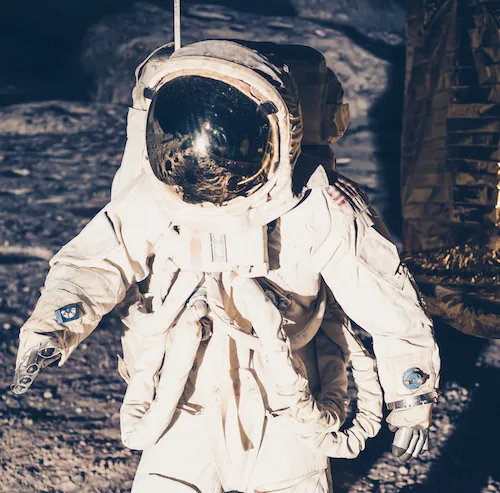The Apollo 11 moon landing in 1969, in which astronauts Neil Armstrong and Buzz Aldrin became the first humans to set foot on the moon, is real. Overwhelming evidence supports the authenticity of the moon landing, but conspiracy theories suggesting it was faked by the U.S. government have persisted. Here's a breakdown:
Evidence Supporting the Apollo 11 Moon Landing:
1. Physical Samples: The Apollo 11 mission brought back 47.5 pounds (21.5 kg) of lunar rocks, soil, and core samples. These samples have unique properties that differentiate them from Earth rocks and have been studied by scientists around the world, some of whom were from countries without allegiance to the U.S.
2. Retroreflectors: The Apollo 11 mission placed retroreflectors on the moon's surface. Even today, these devices reflect lasers pointed at them from Earth, proving that equipment from the mission remains on the moon.

3. Satellite Imagery: Modern satellites, like NASA's Lunar Reconnaissance Orbiter, have captured images of the Apollo 11 landing site, clearly showing the lunar module and even tracks left by the astronauts.
4. Consistency in Astronaut Testimonies: Both Armstrong and Aldrin, as well as other Apollo astronauts, have consistently recounted their experiences on the moon.
5. Witnesses: The Apollo 11 launch, the mission's progress, and its return to Earth were tracked by independent organizations, including other countries' space agencies.
Common Conspiracy Claims and Their Rebuttals:
1. Waving Flag: The claim is that the U.S. flag appeared to wave, suggesting an atmosphere which the moon lacks. In reality, the flag's motion is due to the astronauts adjusting it. It held its shape because of a horizontal rod designed to keep it extended in the moon's airless environment.
2. No Stars in Photos: Due to the moon's bright surface and the camera settings (configured for daylight exposure), the dim stars wouldn't appear in the photographs.
3. Shadows & Lighting: Some claim shadows in the photos suggest multiple light sources, like in a studio. In reality, the moon's reflective surface, combined with uneven terrain, causes these variations in shadow direction and length.
4. Van Allen Radiation Belt: The assertion is that passing through this radiation belt would be fatal for astronauts. However, the Apollo trajectory bypassed the thickest parts, and the astronauts moved through them quickly, receiving only a temporary and harmless dose of radiation.
In summary, scientific evidence, expert testimonies, and the ability for independent verification all support the authenticity of the Apollo 11 moon landing. The consensus among scientists, engineers, and experts in space exploration is that the Apollo 11 moon landing was genuine and historically accurate.


